At the turn of the twentieth century, hundreds of local rumors of natural absurdities sprang into existence. These imaginings were neither legendary in their proportions like Norse or Greek epics, nor, at any time, were they ever intended to inspire any sincere or moral convictions. Rather such stories existed mostly in the practical jokes and tall tales popular among people of a particular trade. Despite their facetious tone, they bear the distinct markings of a rich tradition. Yet legends they are not. In fact, such stories appear in many ways to be an antithesis to traditional legends. Taken together we have placed this class of tales under banner of natura ad absurdum (nature to absurdity), as the tradition may encompass fantastical aspects of any variety (plants, weather, minerals, objects, etc.) in addition to imaginary beings. However, these stories are chiefly remembered for their play on the animal kingdom. It is these extraordinary animals what are known in North America as “fearsome critters.”
Fearsome critters flourished at the turn of the twentieth century within logging camps near North America’s Great Lakes region. However, at the time, immigrant presence in the region had practically established the industry as an international affair. Folklorist Charles E. Brown recounted loggers who remarked that logging camps comprise of a, “babel of tongues.”1 Similarly, Luke Sylvester “Lake Shore” Kearney in his book, The Hodag and Other Tales of the Logging Camps, upholds this characterization by stating that of the Scandinavian, Irish and French loggers, “Each, in his turn, goaded and cursed in his native tongue, using the blasphemy characteristic of his nationality.”2 An 1880s census taken in Wisconsin showed that foreign born loggers comprised over half of the entire industry, the greater majority being Canadian.3
Logging camps were separated from mainstream society for months at a time. There, loggers of multiple nationalities would entertain each other through story, song or joke. Likewise, woodsmen would often invent colorful ways to induct new arrivals to camp. A common initiation right for inexperienced loggers was the “snipe hunt” (sometimes “snow snake hunt”). This task involved novice woodsmen, referred to as “greenhorns,” being led deep into the woods at dusk. Subsequently, each participant is given a bag and directed to go out, with their primitive tools, to catch the elusive animal. The joke is that the snipe, which bears no relation to the wading bird, is a purely fictitious enitty; only ever existing in the imaginations of those pursuing it. Afterwards, those participants, who were victims of the gag, would inevitably induct later recruits in the ritual and so on and so forth.
Fearsome critters enjoyed much popularity in tall tales told aloud in logging camp bunkhouses. After a hard day’s work, loggers would spin tales to regale their fellow woodsmen. Perhaps unbeknownst to their original creators, these anecdotes would be retold over and over again eventually coming to form a rich folkloric tradition. This same tradition also came to incorporate the modern perspective and knowledge of the storytellers. To illustrate, the hodag of North American traditions is described as having, “stegosaurian dorsal spines,”4 while the salvager sucker, of the Puget Sound vicinity, is reported to be able to do the work of “a steam derrick.”5 Just the same, the snow wasset, of the Canadian boreal zone, is reported to “hibernate” during the warmer seasons.6 Each one of these comparisons is sometjing that the originators of classic mythology would have not have had the knowledge to draw.
Perhaps it is their ever curious nature or a varied sense of bafflement that continues to endure fearsome critters to many today. While most fearsome critters probably disappeared from existence as abruptly as they came to be, a good number of such traditions not only survived but continued to make lasting impressions. Several fearsome critters have even become celebrated symbols of regional or local pride. The hodag has become synonymous with the city of Rhinelander, adorning numerous business and clubs, as well the jackalope has grown into a recognizable icon of Douglas, Wyoming. Moreover, fearsome critters, themselves, help foster a sense of wonderment into the mundane everyday; a sprinkling of fantasy, if you will, into an otherwise demystified world. As well, fearsome critters were the product of a fanciful and bold exercise of imagination. Consequently, each fearsome critter possesses a uniqueness that make them truly stand out as local icons in a way that many classic legends simply cannot. However, perhaps the most powerful aspect, fearsome critters hold over traditional legends, is that fearsome critters, collectively, appeal as essentially, “mythological underdogs,” and, in truth, even if one cheers on the popular team—one cannot help but root for the underdog.
♢ 1 Michael Edmonds, Out of the Northwoods: The Many Lives of Paul Bunyan (Madison: Wisconsin Historical Society Press, 2009), 163.
♢ 2 Lake Shore Kearney, The Hodag and Other Tales of the Logging Camps (Wausau: Democrat Printing Company, 1928), 10.
♢ 3 Edmonds, 34-35.
♢ 4 Henry H. Tryon, Fearsome Critters (Cornwall, NY: Idlewild Press, 1939), 23.
♢ 5 The Seattle Star, “Speaking of Fish, Old Reader of Star Writes of Salvager Sucker, Which Does the Work of Steam Derrick.” April 08, 1913. 3. From Chronicling America: Historic American Newspapers, Library of Congress. http://tinyurl.com/m39m8lp
♢ 6 William T. Cox, Fearsome Creatures of the Lumberwoods (Washington: Press of Judd & Detweiler, Inc., 1910), 39.

BIBLIOGRAPHY
- Cox, William T. with Latin Classifications by George B. Sudworth. Fearsome Creatures of the Lumberwoods.
(Washington, D.C.: Judd & Detweiler Inc., 1910.) - Tryon, Henry Harrington. Fearsome Critters. (Cornwall, NY: Idlewild Press, 1939)
- Randolph, Vance. We Always Lie to Strangers: Tall Tales from the Ozarks. (New York: Columbia University Press, 1951.)
- Wyman, Walker D. Mythical Creatures of the North Country. (River Falls, WI: River Falls State University Press, 1969.) *
- Brown, C.E. The Wild Animals of Paul Bunyan's Northwoods. (Madison: self-published, 1935.)
- Borges, Jorge Luis. Book of Imaginary Beings. (New York: Viking Press, 2005.)
- Cassidy, Frederic G. and Hall, Joan H. Dictionary of American regional English. (Cambridge, MA: Harvard University Press, 2002)
- Cohen, Daniel. Monsters, Giants, and Little Men from Mars: An Unnatural History of the Americas. (New York: Doubleday, 1975)
- Wyman, Walker D. Mythical Creatures of the USA and Canada. (River Falls, WI: Univ of Wisconsin Riverfalls Press,1978.)
- Wilson, Harry L. Ma Pettengill. (Garden City, NY: Double Day, Page & Company 1919.)
- Robinson, William H. Yarns Of The Southwest. (Phoenix, AZ.: The Berryhill Company, 1921.)
- Stevens, James. The Saginaw Paul Bunyan. (New York: Alfred A. Knopf, Inc., 1932.)
- Skinner, Charles. “Maine’s Woodland Terrors,” American Myths & Legends. (Philadelphia & London: J.B. Lippincott Co, 1903.)
- Thompson, Harold W. O'Donnell, Thomas F. Body, Boots, & Britches: Folktales, Ballads, And Speech From Country.
(Syracuse, NY: Syracuse University Press, 1939.) - Robert, Paul and Trank, Beath Lynn. Febold Feboldson. (Lincoln: University of Nebraska Press, 1948.)
- Prelutsky, Jack. Imagine That! Poems Of Never-Was. (New York: Random House, 1998.)
- Cobb, Irvin S. Sundry Accounts. Chapt. VIII, “Alas, The Poor Whiffletit.” (New York: George H. Doran Company, 1922.)
- Schwartz, Alvin. Kickle Snifters and Other Fearsome Critters. (Binghamton, NY: Harpercollins Juvenile Books, 1978.)
- Rubin, C.E. & Williams, M. Larger Than Life: The American Tall-Tale Postcard, 1905-1915. (New York: Abbeville Press, 1990.)
- Leach, Maria. Funk & Wagnalls Standard Dictionary Of Folklore, Mythology and Legend. (New York: Funk & Wagnalls Company, 1949.)
- Boyton, Patrick. Snallygaster: the Lost Legend of Frederick County. (Maryland: Self-Published, 2008.)
- Andersen, Alan L. The Frost Haint of ‘Possum Hollow’ and Other Ozark Tales. (Self-published, 2008.)
- Dorson, Richard M. Man and Beast in American Comic Legend. (Bloomington, IN: Indiana Univ. Press, 1982.)
- Life (1951, January 29). “Audubon Continued, His Phony Fish.” Life, Vol. 30, No. 5, pp. 51.
- Life; Lewicki, J. (1960, Aug 22). “Folklore of America, Ballads and tales of the Frontier.” Life, Vol.49 , No. 8, pp. 48-63.
- Ives, Ronald L. (1938, April 2). “You Don't Have To Believe It.” Science News Letter, Vol. 33, No. 14, pp. 214-215+222.
- Rafinesque, C. S. Ichthyologia ohiensis, or Natural history of the fishes inhabiting the river Ohio and its tributary streams,
preceded by a physical description of the Ohio and its branches. (Cambridge, MA: Harvard University Press, 1820.) - Childs, Art. Yarns of the Big Woods.
(Chicago: Associated Editors, 1922 and 1925)
WEBOGRAPHY
- Carden, Gary. (2003). Wondrous and Fearsome Creatures of the Southern Wild. Retrieved April 10, 2009, from Appalachian Rant.
Web site:Folklore Subjects. Retrieved April 09, 2009, from The Read on WNC. - The Gollywampus.(1996). Gallywhat? Retrieved April 07, 2009, from Gallywampus, Irish and American Folk Music
- Andersen, Alan Lance. (2005). CALL FOR SUBMISSIONS, Wizard Academies. Retrieved April 09, 2009, from Wizard Academies.
- Various. (2004). Odd and Curious Beasties. Retrieved April 09, 2009, from WORDCRAFT Forums.
- Mott, D. (n.d.). Unusual Animals. Retrieved April 07, 2009, from ussscouts.org.
- Wooldridge, John. (2007). Monsters of the Ozarks and Missouri - Information Wanted. Retrieved April 09, 2009, from Nick Redfern's "There's Something in the Woods...".
- Carlson, Marc. (1997). American Fabulous. Retrieved October 08, 2009, from Marc Carlson's Homepage, Gaming Materials.
- Roadsideamerica.com Team. (2005). Monico, Wisconsin - Rhinelapus: Tree Root Monster Rival to The Hodag. Retrieved November 15, 2009, from RoadSideAmerica.com.
- Various. (2008). Swamp Booger. Retrieved November 15, 2009, from Taxidermy.Net Forum.
- Zapato, Lyle. (1998). About The Pacific Northwest Tree Octopus. Retrieved November 29, 2009, from Help Save The Endangered Pacific Northwest Tree Octopus from Extinction.
MAINTAINED AND MANAGED BY THE


NOTES
Other names for the side-hill gouger include, but are not limited to: Sidehill Gouger, Dodger, Badger, Guano, Hoofer, Slicker, Walloper, Wowser, Winder, or Sauger; Cutter Cuss, Dodger, Goatithro, Gudaphro, Gwinter, Gyascutus, Haggletopelter, Hunkus, Wapahoofus, Mountain Stem-winder, Prock, Rickaboo Racker, Side-Swiper, Sidewinder, Walloper, and Yamhill Lunkus.
The sidehill gouger's appearance itself is not necessarily link to one particular temporal or mythical creature. A few of its variants however, the sidehill hoofer (favoring a beaver, castorine; 107c), side-hill bear (ursidine; 107d), rackabore (Sus lithotrepanicus; Wymn.) 8, 26 (suidine; 107e), wyman wowser4 (feline; 50f), and sidehill dodge hodag (hodaine; 79d), are.
Another couple of its variants, as listed by Tryon, the powerful and long-necked yamhill lunkus (var. robustissimus; 107a) and a nameless, hairless breed (var. semihirsutus; 107b.)
Subspecies of the hodag include var. Black (79a), Cave (79b), Shovel-Nose (79c), and Sidehill Dodge (79d.)


![]](images/title_cbrkt.png)